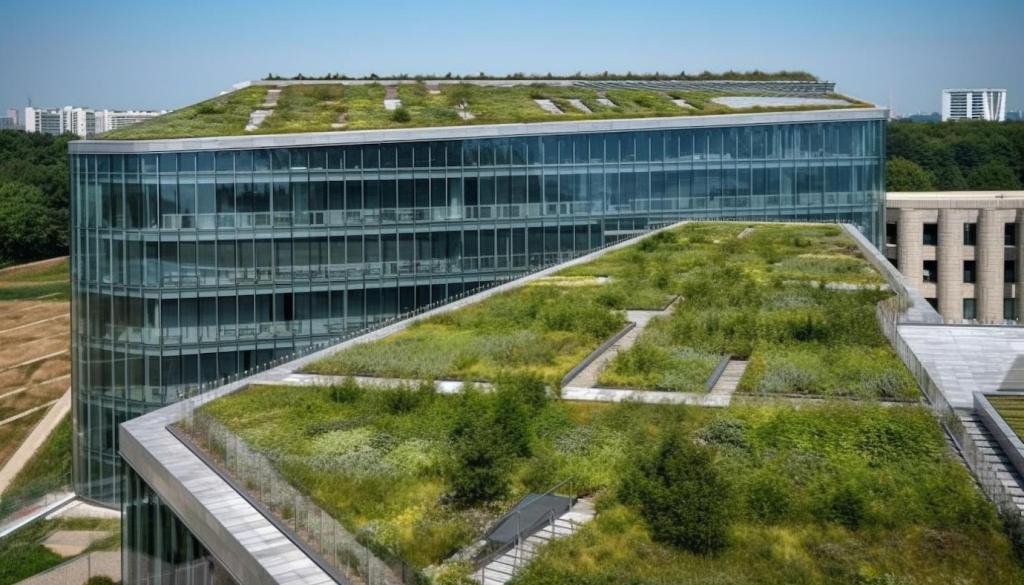Discover a new era in construction that puts sustainability first. Eco-friendly construction solutions are revolutionizing the way buildings are designed, built, and utilized. By adopting innovative materials, energy-efficient techniques, and mindful practices, builders and developers can significantly reduce their environmental impact while creating healthier, longer-lasting spaces. Explore how sustainable construction not only benefits the planet but also adds value to communities and future generations.
Bamboo and Recycled Wood Solutions
Bamboo is fast becoming a favorite in sustainable architecture due to its rapid growth rate and remarkable strength. Unlike traditional hardwoods that take decades to mature, bamboo can be harvested every few years without depleting forests. Similarly, recycled wood, salvaged from old structures, not only reduces the demand for new lumber but also prevents landfill waste. Both materials offer aesthetic versatility and preserve natural resources, forming a cornerstone of eco-conscious design.
Eco-Concrete Innovations
Traditional concrete production is notorious for its high carbon emissions. However, eco-concrete alternatives incorporate fly ash, slag, or recycled aggregates, drastically reducing the overall environmental burden. These innovative mixes maintain structural integrity while utilizing industrial by-products that would otherwise contribute to waste. Eco-concrete presents a pragmatic solution to lowering construction’s carbon footprint without sacrificing performance or longevity.
Natural Insulation Alternatives
Insulation is vital for energy conservation, yet many mainstream options involve chemicals or non-renewable resources. Natural insulation materials, such as sheep’s wool, cellulose from recycled paper, and cork, offer excellent thermal performance while being biodegradable and non-toxic. These alternatives create healthier indoor environments and support circular economies, making them an integral part of environmentally responsible construction.

Passive Solar Building Strategies
Harnessing the sun’s natural energy is a hallmark of green design. Passive solar strategies involve orienting buildings, positioning windows, and utilizing thermal mass to maximize heat gain in winter and reduce it in summer. This design philosophy reduces reliance on mechanical heating and cooling, thereby significantly lowering energy consumption. Through thoughtful planning and smart orientation, passive solar design contributes significantly to a building’s sustainability.

Integrating Green Roofs and Living Walls
Green roofs and living walls bring nature directly into the built environment. By incorporating soil and plants onto rooftops or vertical surfaces, buildings benefit from improved insulation, reduced stormwater runoff, and enhanced biodiversity. These features also mitigate the urban heat island effect, making cities more livable. Beyond their functional benefits, green roofs and living walls create visually striking spaces that promote air quality and human connection with nature.

Adaptive Reuse and Flexible Spaces
Adaptive reuse focuses on repurposing existing structures rather than new construction, conserving resources and embodied energy. Flexible design accommodates changing needs, allowing spaces to be reconfigured over time rather than demolished. This approach extends the life of buildings, reduces waste, and respects architectural heritage while meeting contemporary environmental standards. Thoughtful adaptive reuse exemplifies sustainability beyond the building process itself.
High-Performance Building Envelopes
A high-performance building envelope involves advanced walls, windows, and roofs that minimize heat loss or gain. Proper insulation, thermal breaks, and airtight construction drastically reduce the energy required for heating and cooling. Investing in superior building envelopes lays the foundation for efficiency, making buildings more comfortable and dramatically slashing utility bills over their lifespan.
Solar and Wind Power Integration
Harnessing on-site renewable energy is more accessible than ever. Solar panels and small wind turbines can be seamlessly integrated into building designs, providing clean electricity and reducing dependence on fossil fuels. With the decreasing costs and improving efficiency of these technologies, incorporating renewables is a practical step toward net-zero energy buildings. Their adoption not only aids environmental goals but also increases a property’s value and appeal.
Smart Technologies for Efficient Operation
Smart building technologies such as automated lighting, advanced HVAC systems, and energy monitoring platforms empower building managers and occupants to optimize energy use. These systems intelligently adjust to real-time conditions, reducing waste without sacrificing comfort. By leveraging data and automation, smart solutions help maintain peak performance, extend system lifespans, and make energy efficiency a functional part of daily operations.
